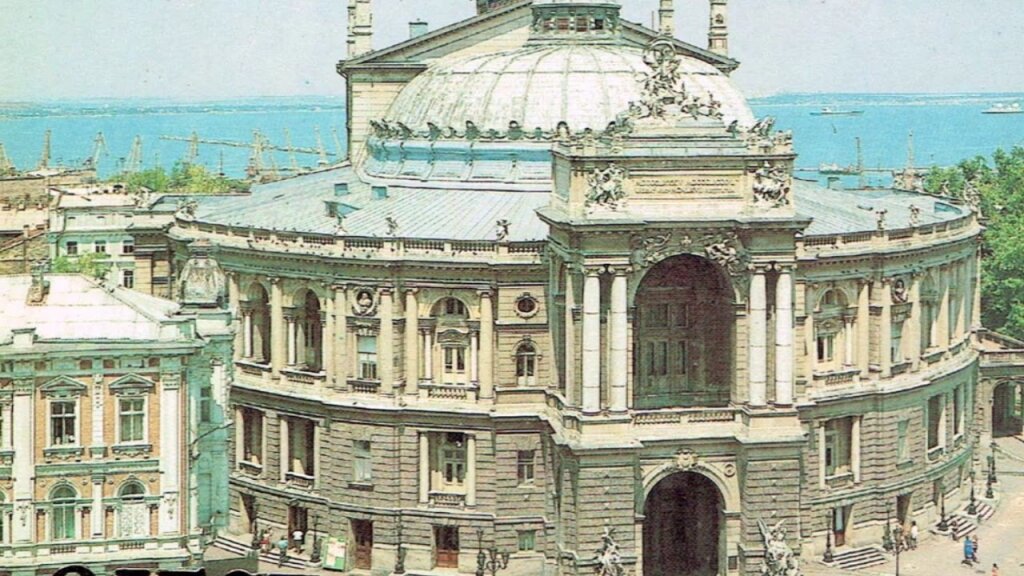Alevtina Dmitrievna Tsvetkova is a Professor in the Department of Philology and Journalism at Toraigirov University, Pavlodar, Kazakhstan. She has published books, articles, and textbooks, including three folklore collections. Her particular interest is in the folklore of Slavic immigrants, including Ukrainians, Russians, and Russian Old Believers living in the Altai area of northeast Kazakhstan. She specializes in legends, beliefs, and mythological narratives as they reflect the relationships between ethnic groups.
Natalie Kononenko was Kule Chair in Ukrainian Ethnography at the University of Alberta until her retirement in 2019. Prior to working at the University of Alberta, she worked at the University of Virginia, where she also served as Department Chair and Assistant Dean. Kononenko is the author of four books and numerous articles. Her Ukrainian Minstrels: And the Blind Shall Sing and her Ukrainian Ritual on the Prairies won best book awards. She received a best translation award for her Ukrainian Epic and Historical Song: Folklore in Context. Kononenko is currently writing a book based on her fieldwork in Ukraine, conducted shortly after that country’s independence.
Tsvetkova and Kononenko conducted field work among Ukrainian communities and Tsvetkova currently runs yearly summer field expeditions. She has hosted visitors from the United States, Canada, Russia, Japan, and Thailand.
Our purpose in writing this article was twofold. The first reason was to engage in the debate concerning what constitutes folklore. The other was to let fellow Slavists know about an under-researched part of the former Soviet world, namely Kazakhstan, with its many ethnic communities.
Many Ukrainians in Canada and elsewhere in the West consider proper folklore to be material that preserves old, usually nineteenth-century, traditions. Their attitude is influenced by fears of Soviet, and now Russian, attempts to erase Ukrainian culture. While Soviet and Russian attacks on Ukrainian culture are real, folklore survives them all. Folklore adapts to lived circumstances and living folk traditions are different from those of the past precisely because they are alive and suit their circumstances. Comparing Ukrainian Christmas traditions in Canada and Kazakhstan shows that folklore is appropriate to the culture in which Ukrainians live. Folklore is alive and well— just different than it used to be.
Our other purpose in writing this piece was to introduce Slavists to the rich traditions of Kazakhstan. When Kazakhstan was a republic of the Soviet Union, it was minimally accessible and little studied by Western scholars. Now that work in Kazakhstan has become an option, we encourage other scholars to examine its many ethnic groups and their traditions.
Because Kazakhstan is little studied in the West, we give the history of Ukrainian migration to this country. Early settlements of Ukrainians in Kazakhstan were groups or travelers who passed through the area, liked what they saw, and stayed. Later, some Ukrainians were forcibly resettled to the area and others came because they were attracted by open land, the chance to prosper that Kazakhstan offered. One important wave of willing settlers came with the Stolypin reforms in the first years of the twentieth century. This wave occurred at just about the same time that a massive influx of Ukrainian settlers went to the Canadian prairies. The similarity in time of arrival and motive for migration—land hunger—makes these two groups ideal for comparison.
The folk culture of Ukrainians in Canada is well-known (see, for instance, Kononenko’s Ukrainian Ritual on the Prairies). The situation in Kazakhstan is different. For the major holiday of Christmas, for instance, we may observe three distinct periods of holiday activity: Christmas, New Year’s, and Malanka, with distinctive actions performed during each. In Kazakhstan, Ukrainians go carolling. Young people go to the homes of their neighbors, sing traditional songs, and ask for gifts of food. But food is not their main motivation—it is a chance to celebrate, to have fun with other young people. Some of the songs contain threats or erotic elements. The sanctioning of normally disallowed behavior is another aspect of the Christmas season that makes it attractive to the young.
The folk culture of Ukrainians in Canada is also complex and rich but different from its counterpart in Kazakhstan. Carolling, for instance, is essentially nonexistent. Part of the reason for this difference is a lack of knowledge of Ukrainian in Canada, but another contributing factor is the settlement patterns the Canadian government imposed on Ukrainian immigrants. Farmsteads are on quarter sections far away from one another, making walking from one home to the next difficult, if not impossible.
Even though they do not carol, Ukrainians in Canada have rich and complex Christmas celebrations—focused on food, but in a different sense. They make sure to have 12 dishes at Christmas to celebrate the 12 apostles and also to affect the 12 months of the calendar year. They engage in magic acts aimed at producing food in abundance. Because their neighbors are Anglophone, they have celebratory, food-centered events in which non-Ukrainians can, and do, happily participate.
The comparison of these two sets of Christmas season activities shows that Ukrainians in both areas retain a keen sense of their heritage—and express it through festive activities that are appropriate to their lived circumstances. Ukrainians in Kazakhstan engage in activities that are more like those in Ukraine itself. They have retained their language, albeit it in surzhik form. They live in settlement patterns that resemble the structure of villages in Ukraine, which allows them to carol from house to house, singing and performing in Ukrainian. Ukrainians in Canada, meanwhile, live on isolated farmsteads and the aggressive assimilation efforts of the Canadian government mean that most are not Ukrainian-speaking. They nonetheless retain a keen awareness of their Ukrainian identity, expressing it in a way their non-Ukrainian neighbors can understand and appreciate, namely through food-centered celebratory events to which all, Ukrainians and non-Ukrainians alike, are invited. The only Ukrainian Canadian Christmas season activity of Ukrainians in Canada which is like that of Ukraine and Ukrainians in Kazakhstan is siiaty, a mock grain-sowing ritual that children perform to ensure the growth of crops.
The Christmas period folklore in the two areas is alive and well precisely because it has adapted to the lived circumstances of the area in which it is performed. Modern folklore scholarship focuses on the way in which lore and folk practices adapt to where they are extant; it does not valorize the preservation of antique forms. Ukrainian Christmas traditions in Kazakhstan and Canada provide an excellent example of this phenomenon.
To conclude, we would like to return to our second goal for writing this blog post and describe other research opportunities in Kazakhstan. There are other ethnic groups in Kazakhstan in addition to the Ukrainians whom we studied. Germans live in close proximity to Ukrainians and have adopted certain Ukrainian customs such as the large wedding wreath worn by the bride. There are Russian Old Believer communities in this country. It is also important to note that native Kazakhs live alongside Ukrainians and share activities like communal singing. Ukrainians and Kazakhs gather to socialize and sing in both Ukrainian and Kazakh, even though the Ukrainians do not speak Kazakh and the Kazakhs do not speak Ukrainian. The possibilities for exploring culture interaction in Kazakhstan are vast and we encourage our fellow scholars to do just that.



